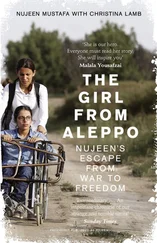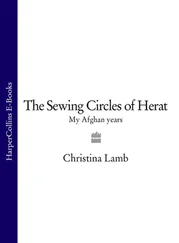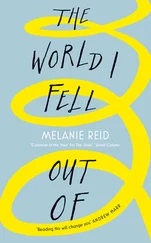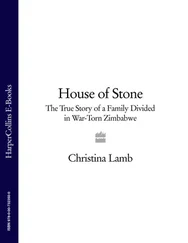There would be no victory parades, for there had been no victory. Lofty aims of transforming the country were forgotten. Now it was about damage control. ‘Helmand is not the Western Front; it doesn’t end in a hall of mirrors in Versailles like 1918,’ said Brigadier Rob Thomson. ‘I don’t think wars today end in defeat or victory; you set the conditions to allow other elements to come in.’
The question on everyone’s lips was how long would it be till the Taliban raised their black flags instead? Already they were back in many districts, showing their presence, if not yet hoisting flags.
Brigadier Thomson would not be drawn on the future. ‘There’s clearly going to be a contest,’ he said, ‘and it would be foolish of me to make a prediction into the long term about how this will run.’ The Taliban, meanwhile, had already declared victory. ‘The flight of the British invaders is another proud event in the history of Afghanistan,’ said their spokesman.
Locals watched and shrugged at the latest foreigners to come and leave their country. They had been surprised when the Angrez , as they called the British, came back, for the British Army had suffered one of the worst defeats in its history at nearby Maiwand in 1880. No one had ever really explained why they had returned, if not to avenge that. Nor had they understood what the point of killing Taliban was, when more just came over the border from Pakistan, a country which had received more than $20 billion in Western aid since 9/11, and turned out to have been hosting bin Laden.
So the farmers just got on and harvested their poppy, for it would be a record crop of more than 200,000 hectares, almost half of that in Helmand, by far the world’s biggest producer. Most villages still had no jobs, no electricity, no services.
Ministry of Defence bureaucrats could spend money commissioning slick ‘legacy videos’, but the truth was that Britain’s fourth war in Afghanistan had ended in ignominious departure. It had been the country’s longest war since the Hundred Years War, longer than the Napoleonic Wars, and the most deadly since the Korean.
British officers might be lobbing accusations at each other, but Helmand was a reflection of the whole war in Afghanistan. In the thirteen years since invading Afghanistan in response to 9/11, NATO forces had lost 3,484 troops and spent perhaps $1 trillion. For the Americans, who lost the most soldiers and footed most of the bill, it was their longest ever war. What had once been the right thing to do – what President Barack Obama called ‘the good war’ – had become something everyone wanted to wash their hands of.
How on earth had the might of NATO, forty-eight countries with satellites in the skies, 140,000 troops dropping missiles the price of a Porsche, not managed to defeat a group of ragtag religious students and farmers led by a one-eyed mullah his own colleagues described as ‘dumb in the mouth’? And why had they even tried?
Overall, more than $3 trillion had been spent in Iraq and Afghanistan in response to a terrorist attack that cost only between $400,000 and $500,000 to mount. 1The aim, as stated by Gordon Brown while he was Prime Minister, was that ‘We fought them over there to not fight them here.’ Yet it was hard to see how these wars had left the West safer. On the contrary, we had ended up with the Pakistani Taliban, who were far more dangerous than the original Afghan Taliban, and regional offshoots of al Qaeda like al Qaeda in the Arabian Peninsula (AQAP) in Yemen, al Qaeda in the Islamic Maghreb (AQIM) in North Africa, al Shabaab in Somalia and Boko Haram in Nigeria. Mullah Omar was still at large, as was Ayman al Zawahiri, Osama bin Laden’s deputy, who had succeeded him as leader. Some of the original al Qaeda from Afghanistan/Pakistan that was supposed to have been incapacitated had turned up under the name Khorasan in Syria. Lastly, there was ISIS, the so-called Islamic State of Iraq and Syria, far larger and more terrifying than al Qaeda, which by the end of 2014 controlled territory the size of Britain in Iraq and Syria, as well as making inroads in Libya. ISIS had declared a Caliphate, and was vowing to extend its reign of terror and beheadings as far as Spain, prompting the US and Britain to send advisers back to Iraq, and sucking them back into their fourth war since 9/11. So many Europeans had been attracted as jihadists into its ranks that intelligence chiefs were warning an attack on British soil was ‘almost inevitable’.
From Libya to Ukraine, around the world conflicts were springing up everywhere, like the Whack-a-Mole arcade game in which no matter how many moles are smashed with a hammer, more simply pop up elsewhere. There were more countries undergoing wars or active insurgencies than at any time since the Second World War, yet never had the major powers been wearier of intervention. What had started with hopes of a new world for Afghan women had ended with medieval black-hooded executioners, religious wars across the Middle East, and Jordan’s King Abdullah warning that World War III was at hand. 2
As for Afghanistan, schools, clinics and roads had been built across the country, yet it remained one of the poorest places on earth. By the end of 2014 the US would have spent more on Afghanistan than it had on the Marshall Plan to rebuild Europe after the Second World War. Yet poverty remained stubbornly high, with more than a third of Afghans still surviving on less than 80p a day, according to the United Nations Development Programme, and half its children having never set foot in a classroom. 3In a land where 70 per cent of the population was under thirty, the majority had only ever known war. War against the Russians, war against each other, war between the West and al Qaeda and the Taliban. In this last, 15,000 Afghan troops had died, as well as more than 22,000 civilians, and the numbers were going up each year.
The West’s relations with the country it had been trying to help, and the ruler it had installed, had deteriorated to such an extent that in President Hamid Karzai’s farewell speech to his cabinet in late September 2014, there were no thanks for Britain or America. Instead he blamed America – as well as Pakistan – for not wanting peace. ‘We are losing our lives in a war of foreigners,’ he raged.
No one who goes to war comes back unchanged. I spent two wars in Afghanistan – the first as a recent graduate (covering the final showdown of the Cold War), the second as a new mum in the aftermath of 9/11 (covering a war involving my own country). I left a middle-aged woman who had more than used up her nine lives, with a teenage son going into a world far more ominous than that in which I grew up.
This book sets out to tell the story, by someone who lived through it, of how we turned success into defeat. It is the story of well-intentioned men and women going into a place they did not understand at all – even though, in the case of the British, there was plenty of past history. The 1915 ‘Field Notes on Afghanistan’ given to those heading out to the Third Anglo–Afghan War are full of salutary warnings, starting right off with ‘Afghans are treacherous and generally inclined towards double dealing.’ Major General Dickie Davis, sent to Afghanistan in 2002, recalls how when he was briefed on the mission at military headquarters (PJHQ) before departing, he asked, ‘How many hundreds of years have we got?’4
Anyone visiting the NATO military headquarters in Kabul might be struck by the number of saplings planted on the small green over the years – one for each commander. There had been seventeen in the course of the war. In Helmand alone Britain had had seventeen commanders, each there for just six months. They might wonder too how a war could be fought effectively when there was no real border with the neighbouring country of Pakistan, which the enemy made its safe haven.
Читать дальше












